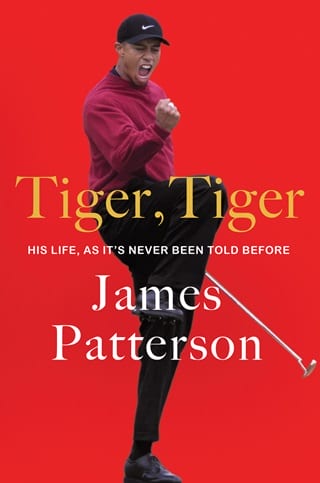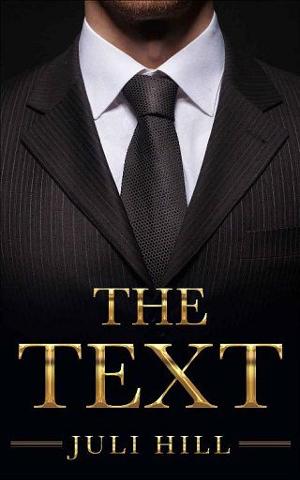Chapter 47
Bighorn Golf Club
Palm Desert, California
July 30, 2001
Are you ready for some golf?” Tiger asks in his latest national TV spot.
The line promoting ABC’s Monday Night Golf is a wink at the famous “Are you ready for some football?” lyric that Hank Williams Jr. has sung since 1989 to introduce the ABC Sports blockbuster Monday Night Football broadcast.
In a venue bigger than any football stadium—more than seven thousand yards on the Canyons Course at Bighorn Golf Club, in Palm Desert, California—Tiger will be competing for a $1.2 million first prize. He’s well on his way to a fourth consecutive year atop the tour money list, having earned $9,188,321 in the 2000 PGA season and millions more in the 2001 season still underway, not to mention his position as America’s top athlete endorser, representing a dozen brands, including American Express, Buick, and Wheaties.
Disney’s determined to have Tiger promote its theme parks, but there’s a major obstacle: his “iron-clad deal with Nike,” which poses “a serious problem,” as an anonymous Disney source tells the Los Angeles Times. Even between two behemoth corporations, “there was a concern that the Disney brand name would overshadow the Nike name.”
In September of 2000, Nike and IMG concluded eighteen months of negotiations to extend the $40 million, five-year contract Tiger signed in 1996 for a further five-year term, reportedly worth up to $100 million. According to the Portland Oregonian, Tiger’s new deal to “plug Nike’s shoes, clothes, and equipment” includes a cut of Nike Golf’s profits and could “make [Woods] the highest paid sports endorser in history.”
“Did he get a big raise?” Nike Golf’s president, Bob Wood, says. “Yes, he did, and he’s worth every penny of it.”
Despite the record-setting paycheck, Earl Woods insists that money is not and has never been a driving factor for his son. “He doesn’t need someone waving dollar signs in front of his face to get him going,” Earl tells the New York Times. “Tiger has no comfort zone when it comes to competition. People don’t believe me, but he’s going to get much better. We’ve only seen the tip of the iceberg.”
Disney settles for a smaller piece of that ice. The entertainment giant secures a deal with Tiger guaranteeing that he will continue to appear in future televised golf exhibitions and in “Battle at” broadcasts.
Nike remains a major player on the Palm Desert set. Nike Golf’s business director, David Hagler, is responsible for “scripting” Tiger’s clothing for major events, telling Canada’s National Post that Tiger “pretty much wears the same cap every tournament, it’s just a question of which colour he wears. The specific cap and the pants we kind of leave up to him, we’re not that stringent. He has good enough taste that he knows what colour cap and pants to wear.”
ABC’s changed up the competition format. In 1999, Tiger defeated David Duval in the “Showdown at Sherwood,” then lost to Sergio Garcia in last year’s “Battle at Bighorn.” This year, PGA and LPGA stars will face off in mixed doubles: Tiger and Annika S?renstam versus David Duval and Karrie Webb.
The alternate-shot competition stretches on for so long that the last five holes are played under floodlights. Tiger’s unbothered.
“I grew up playing under the lights,” he tells reporters. “The tee shots are all right. The second shots are all right.” The hard part, he says, is “just seeing what the ball is going to do on the ground.” Tiger and Annika S?renstam clinch a win in extra play well after midnight on the East Coast.
S?renstam, a thirty-year-old Swedish native who’s already qualified for the LPGA Hall of Fame, says, “It was a great day for women’s golf, and for Karrie and me to have a chance to play with these guys.” Back in April, in the final round of the Kraft Nabisco Championship, S?renstam had her own Nike moment, making sports—and sportswear—headlines by donning a custom pair of shiny, cherry-red Nike leather golf shoes to defeat Karrie Webb.
Nike’s next challenge: meeting Tiger’s exacting standards for golf equipment. Kel Devlin, Nike’s sports marketing director, worked with Tiger on the development of the Nike Tour Accuracy. Tiger debuted the golf ball, Nike’s first, during his record-setting 2000 PGA season. “He makes us work hard because his standards are so high,” Devlin says. “But for us, it’s fun trying to bring our game up to his level.”
Nike Golf’s Stan Grissinger describes the extent of Tiger’s sensory perception: he’d take four balls, bounce each four times off the edge of his sand wedge, then report to the Nike tech team.
“Here they are, hardest to softest,” Tiger would tell them.
“And he was always right,” Grissinger says. “We’re talking about a compression point or two, something only a machine can detect accurately.”
Equipment engineer Tom Stites brings his entire company in-house to Nike. Stites, who designed clubs for eighteen-time major champion Jack Nicklaus and nine-time major champion Ben Hogan, is now tasked with creating clubs for Tiger and David Duval.
“A golf club has to be manufactured just like building a house,” Stites recalls Hogan saying.“You’ve gotta engage the dirt first. And so look at the sole of the golf club, and then build back to the hands from that.”
Stites studies the clubs Tiger used throughout his childhood and teenage years, then cuts prototypes from blocks of steel billet. The irons are forged at Endo Manufacturing, in Japan, leaving one hundred to three hundred grams of excess metal to be trimmed away once each club is tooled at Stites’s firing ovens, in Fort Worth, Texas.
He, too, notes Tiger’s sensitivity to tiny differences. “Around here, we say he’s a space alien,” Stites remarks. “He has tactile skills we cannot comprehend.”
“I like the heavy one,” Tiger says when Stites sends him six drivers to test.
“What?” The distinction doesn’t immediately register.
Stites’s team reweighs each club. “There couldn’t have been a difference of more than a gram in any of the drivers,” he says of the prototypes. But “sure enough, he’d picked the one that was maybe a half-gram heavier than the rest. That’s like if I gave you two stacks of 150 $1 bills, then tore one bill in half and told you to pick the heavier pile.”
The meticulous attention to detail pays off in late 2002, when Tiger starts using a Nike driver.
On Monday, March 4, 2002, Tiger is in New York City to promote his new video game with EA Sports, Tiger Woods PGA Tour 2002. He plays the game on a PlayStation 2—as Mark O’Meara.
“I don’t play me because it’s too weird,” Tiger tells the Associated Press. “I usually like playing O’Meara or someone like that, so I can be old and gray.”
Tiger’s two opponents—each playing as Tiger—are boys being treated for serious illnesses. Tiger loses the game but delights fans when he appears in Times Square at Toys “R” Us and on MTV’s Total Request Live, wearing a black leather blazer with the tips of his hair frosted a reddish blond.
MTV host Carson Daly is a passionate amateur golfer, but he and Tiger talk more about music than sports. The last concert Tiger attended? Janet Jackson. His favorite band? U2.
Next month, Daly will attend Tiger Jam V, the fifth of Tiger’s celebrity golf-entertainment benefit events, which raise money for children’s charities. Daly, who was also at Tiger Jam III, calls it “a chance to do the right thing with Tiger. And the golf and the gambling didn’t hurt.”
 Fullepub
Fullepub 



